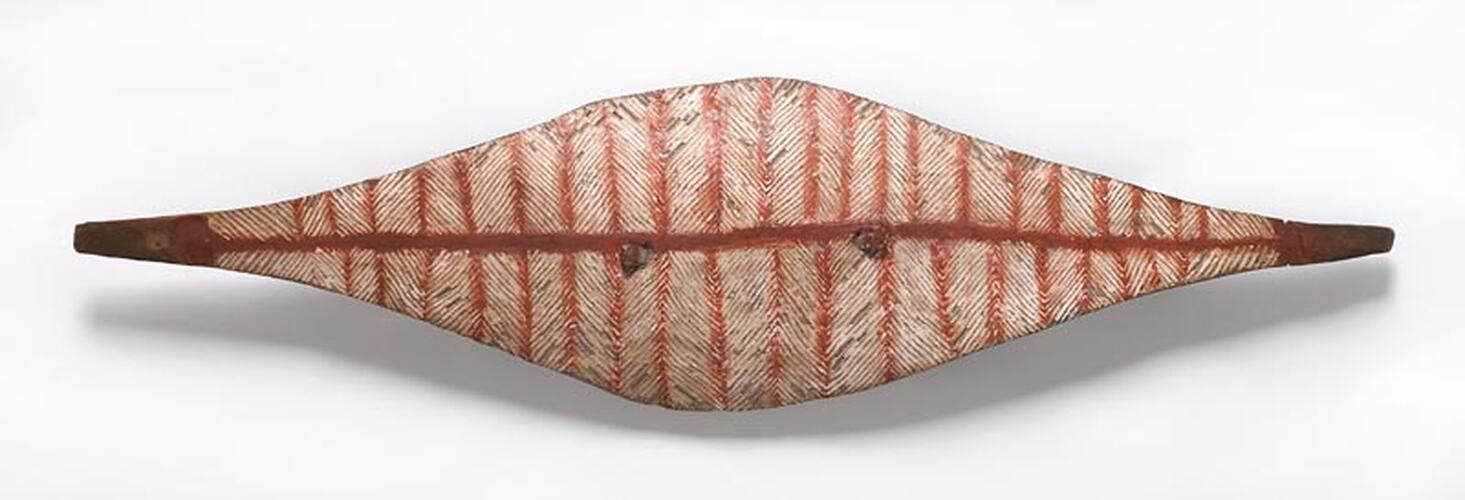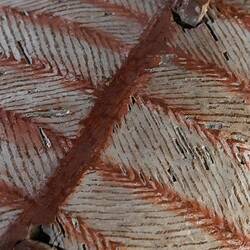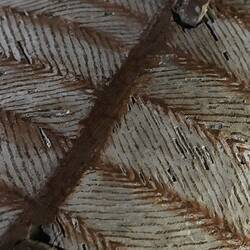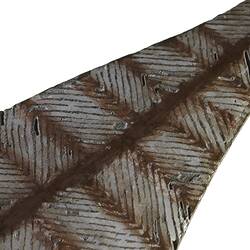Summary
These distinctive broad shields were used to deflect spears in close combat. The designs on the shields were meant to be visually arresting with dexterous combatants able to use them to create distracting optical illusions in battle. Tools made of stone and animal teeth like the sharp teeth of a marsupial were used to shape the shields and engrave the designs onto the face. Shields could also be regarded as having innate power and older shields used in many successful battles were prized objects of trade. The history of 'ownership' of such objects between leaving the possession of Aboriginal people and becoming part of Museums Victoria collections is diverse and often obscure. Early collectors acquired objects such as these because it was believed that Aboriginal people were 'a dying race'. This belief and the growing interest in ethnography created a very active trade in Aboriginal objects from the mid-nineteenth century onwards.
Local Name
Giam/Kerrem
Physical Description
A broad shield with tapering ends made from hardwood painted with natural pigments. The concave outer surface has two sections of incised patterning separated by a single column of red ochre. It is decorated with a herringbone pattern and painted with white pipe clay and red ochre. The handle is made of a bent stick inserted into two holes were drilled through the shield and secured to the reverse side.
Significance
This shield is thought to have been collected by William Thomas who built a substantial collection of Victorian Aboriginal artefacts most of which were later handed with his notes to Brough Smyth. Smyth used these objects and notes to write his book 'The Victorian Aborigines' published in 1878. Thomas had been the assistant protector and guardian of Aborigines for the Port Phillip, Westernport and Gippsland regions under George August Robinson, the Chief Protector for the Port Phillip Protectorate.
More Information
-
Object/Medium
Shield
-
Maker
-
Locality
-
Date Produced
-
Date Collected
-
Object Measurements
890 mm (Length), 245 mm (Width), 10 mm (Height), 0.8 g (Weight)
-
Keywords
-
References
[Book] Museum Victoria. 2004. Treasures of the Museum. Victoria, Australia. 206.
-
Type of item
-
Discipline
-
Category
-
Collecting Areas




